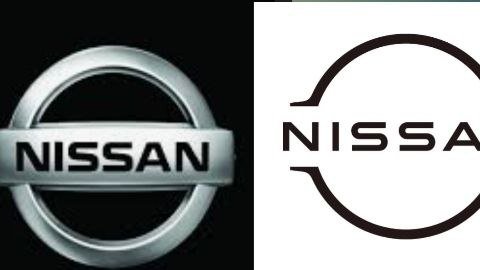Table of Contents
The Rise and Fall of Nissan: A Brief History
Nissan began its journey as a significant player in the automotive industry shortly after World War II, evolving into a brand synonymous with innovation and performance. The launch of iconic models such as the Datsun 240Z in the early 1970s showcased Nissan’s commitment to producing affordable, sporty vehicles, which captured the attention of car enthusiasts and solidified its reputation in the global market. As the years progressed, Nissan continued to innovate, introducing vehicles like the GT-R, which further established its status in motorsport and among performance car aficionados.
However, the 1990s marked a turning point for Nissan. The company faced substantial financial challenges, exacerbated by the economic downturn in Japan and an increasingly competitive automotive landscape. This decline prompted a strategic alliance with Renault in 1999, spearheaded by Carlos Ghosn, who stepped in as a pivotal figure in Nissan’s resurrection. Under Ghosn’s leadership, Nissan implemented a bold restructuring plan, focusing on cost-cutting and revitalizing its product line, which ultimately led to a remarkable turnaround. By the mid-2000s, Nissan regained profitability and expanded its global presence, launching successful models that resonated with consumers worldwide.
Despite this resurgence, Nissan’s fortunes began to wane again in the following decade. Several factors contributed to its decline, including internal governance issues and market volatility. The lack of succession planning and challenges stemming from Ghosn’s controversial exit raised serious questions about the company’s leadership and strategic direction. As a result, Nissan now faces a crucial juncture in its history, with the need to reassess its operations and explore new avenues for growth while addressing the legacy of past decisions. Balancing innovation with sustainability and navigating complex global markets will be essential for Nissan to reclaim its standing in the automotive sector.
The Unraveling of the Honda-Nissan Merger Talks
The proposed merger between Honda and Nissan was heralded as a potential game changer for the automotive industry, aiming to enhance competitiveness amidst growing market challenges. However, the complexities surrounding these merger talks quickly revealed the intricate dynamics at play. Cultural differences between the two companies were significant, with Honda’s corporate culture emphasizing collaboration and consensus, while Nissan maintained a more hierarchical management structure. This disparity became a point of contention, hindering effective communication and collaboration.
Furthermore, financial expectations varied greatly between the two automakers. Honda’s intent to pursue a restructuring approach—aimed at rejuvenating its market presence and boosting profitability—was met with skepticism from Nissan. Executives at Nissan were concerned that a merger would lead to the company being restructured in such a way that would diminish its autonomy, effectively turning it into a subsidiary of Honda. This fear of losing operational independence created a significant roadblock in negotiating terms that would satisfy both parties.
Moreover, the management philosophies of both companies diverged sharply. Honda’s leadership advocated for a cooperative model that emphasized synergies and shared benefits, while Nissan’s executives were focused on preserving their strategic independence and maintaining control over their decision-making processes. The unwillingness of Nissan to cede control served to exacerbate tensions and stall progress in negotiations.
Ultimately, the collapse of the merger talks between Honda and Nissan can be attributed to a complex interplay of cultural differences, financial expectations, and contrasting management strategies. As discussions unraveled, both companies faced not only the immediate fallout but also long-term implications for their operational strategies and competitive positions within the automotive market. The failure of these talks serves as a reminder of the challenges that arise in cross-cultural corporate collaborations.
Current Challenges Facing Nissan
Nissan is currently navigating a turbulent period characterized by several substantial challenges that threaten its position in the competitive automotive market. One primary issue is the company’s declining sales figures, which have been a significant concern over recent years. This trend stems from various factors, including increased competition from both established automakers and emerging electric vehicle manufacturers. As consumers increasingly prioritize sustainability and innovation, Nissan’s inability to keep pace with market demands has contributed to a decline in sales across various regions.
In addition to falling sales, Nissan’s aging product lineup poses a considerable hurdle. Many of their models have not undergone significant updates or redesigns, leading to diminished consumer interest. The stagnant nature of their offerings contrasts sharply with competitors who continuously innovate and refresh their vehicle lineups to capture consumer attention. Consequently, Nissan’s market share has been adversely affected, as buyers seek alternatives that provide modern features and enhanced sustainability.
Financially, Nissan has faced challenges reflected in its recent revenue reports, which indicate significant losses. The company’s financial instability has prompted workforce reductions and global capacity cuts as part of a broader strategy to manage costs. These measures, although necessary, further highlight the precarious state of Nissan’s operations. The cuts raise concerns about the company’s ability to acknowledge and adapt to market changes, especially in an environment that requires agility and responsiveness to consumer preferences and technological advancements.
With these challenges, it is clear that Nissan must implement urgent measures to reverse its fortunes. Strategic realignment focused on product innovation, market analysis, and enhanced consumer engagement becomes imperative. Without decisive action, Nissan risks remaining in a severe situation that could jeopardize its long-term viability in the automotive sector.
Looking Ahead: What’s Next for Nissan?
In light of the recent disruptions caused by the failed merger talks with Honda, Nissan faces a critical juncture that necessitates strategic realignment and the exploration of new partnerships. As the automotive industry continues to evolve with shifting consumer preferences for sustainability and technological advancement, Nissan must identify viable collaborators to enhance its competitive edge and market presence. Potential partners may include electric vehicle startups or established players in various automotive sectors that can complement Nissan’s strengths in manufacturing and innovation.
Additionally, strategic adjustments within the company are vital to navigating this transitional phase. Emphasizing a robust product development strategy that focuses on electric and hybrid vehicles can allow Nissan to leverage its heritage while aligning with global trends toward eco-friendly transportation. The Nissan Leaf, for instance, has already established a reputation in the electric vehicle market, and expanding this line could be pivotal in setting the stage for future growth.
Financial recovery strategies will also play a crucial role as Nissan works to regain its footing. This may involve reassessing their pricing models, optimizing supply chain efficiencies, and reallocating resources to prioritize high-demand segments. Enhanced market positioning will require not only innovation in product offerings but also clear communication of the brand’s value proposition to consumers. By actively engaging with stakeholders and consumers, and offering solutions that resonate with their needs, Nissan can foster customer loyalty and strengthen its market foothold.
Overall, the path forward for Nissan will involve a delicate balance of honoring its rich history in the automotive sector while courageously venturing into new territories of innovation and partnerships. As they chart this course, a commitment to sustainability and consumer satisfaction will underpin their efforts to thrive in an increasingly competitive landscape.





